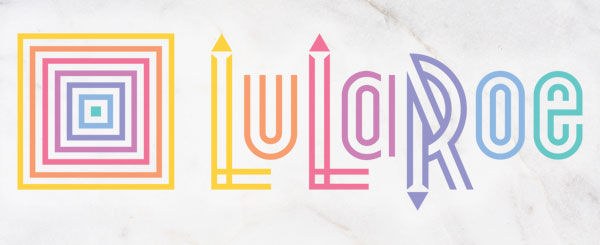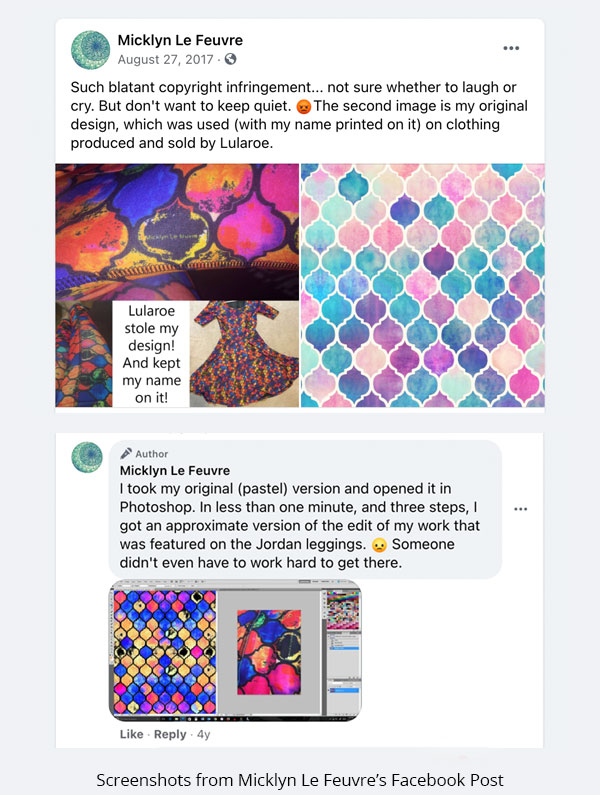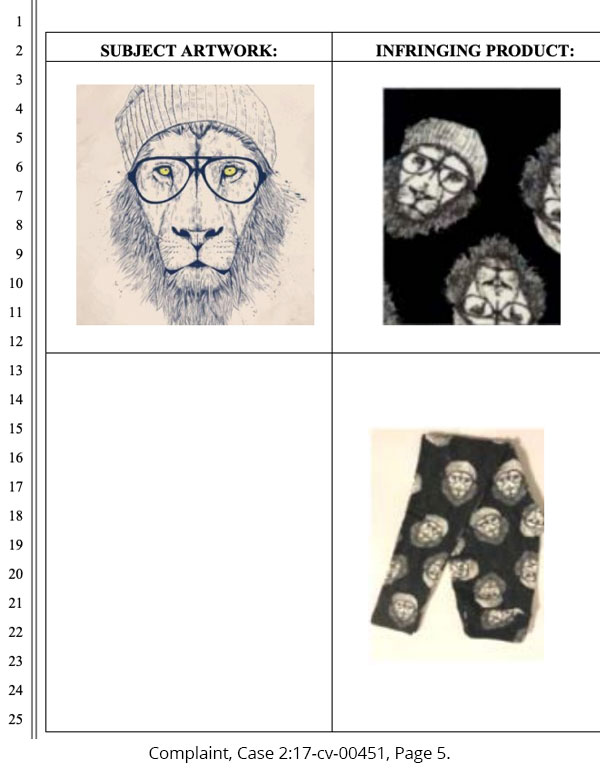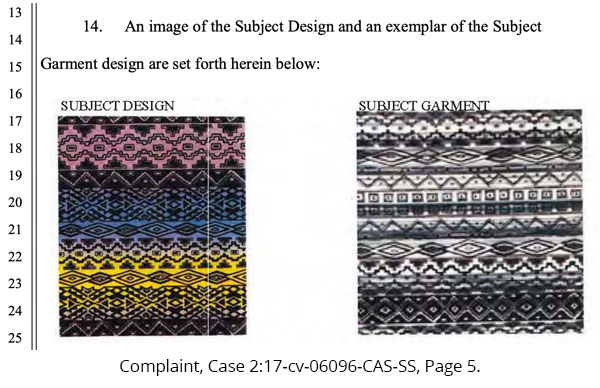LuLaRoe, LuLaRich, or LuLaLawsuit? Amazon Docuseries on LuLaRoe Highlights Needs for Copyright Diligence

The new Amazon Prime docuseries “LuLaRich” shined an unflattering spotlight on LuLaRoe’s business practices and its vast teams of independent fashion retailers, highlighting the pressures of a growing company to meet near-impossible market demands. LuLaRoe has faced multiple copyright infringement lawsuits, which allege that the clothing company’s race to create enabled its designers to steal other artists’ work.
What is LuLaRoe?
Founded in 2012, LuLaRoe is a national multi-level marketing, or as Mark Stidham, CEO of LuLaRoe said, “a multi-level management business,” that sells women’s clothing. LuLaRoe’s most famous products are the limited edition, patterned leggings sold through “parties” or social media, such as Facebook Live videos.
Instead of having brick-and-mortar locations, LuLaRoe operates by hiring independent fashion retailers (“IFRs”) to sell products directly to consumers. IFRs have the potential to move up in the hierarchy of sellers – to managers – by recruiting other individuals to sell for them. According to Forbes, IFRs are expected to pay at least $5,000 to start their LuLaRoe collection and can only choose the type of pieces (dresses, leggings, etc.) they’ll receive, not the designs (patterns) of these items.
Business Insider reported on LuLaRoe’s extremely rapid growth from 2015-2016, where the company turned 2,000 IFRs into over 35,000 retailers with an estimated $165 million in sales. In 2017, the company topped $2 billion in sales. With the rapid growth of the company came an increased demand for “unicorns,” which are exclusive patterns sold in limited quantities.
Did LulaRoe’s search for “unicorns” send them down a path to Copyright Infringement?
Thanks to the boom in sales and the fervor surrounding “unicorns” LulaRoe designers were expected to produce a total of 400 new designs every day. The expectation, to create that many new and creative designs, was just too high, stated a former LuLaRoe designer in the Amazon docuseries.
Designers allegedly began taking designs from Google and “making minor tweaks” in an effort to keep up with the volume expectations and avoid potential infringement claims. The former designer taught newer designers how to cheat the system, by taking a print they already made, removing two items, and recoloring it. In LuLaRich, however, she stated she was “making art with a gun against [her] head.”
How Has LuLaRoe Handled Copyright Infringement Allegations?
LuLaRoe has faced more than one copyright infringement lawsuit from artists, who claimed the company used their designs, but all have been settled before a decision was made by a judge.
One such artist, Micklyn Le Feurve, aired her grievances on Facebook, where people urged her to hire an intellectual property lawyer. She confirmed that she had, and since then, she’s been unable to comment on what happened—leading those following the story on her Facebook page to believe that LuLaRoe paid her to not pursue any further claims. What Micklyn was able to prove, however, was that she could get from her design to the LuLaRoe copycat in only three steps within Photoshop. While Micklyn admits the pattern’s color is different and possibly more distressed than the original, the artist also alleges that her watermark was even found printed on the LuLaRoe apparel.
Another artist, based in Hungary, actually filed a lawsuit against LuLaRoe in the Central District of California. Balaz Solti created an original artwork known as “Cool Lion.” Solti believed that her “Cool Lion” image–a lion with a beanie hat and glasses—was copied and multiplied in varying angles on apparel. Solti sued LuLaRoe for copyright infringement and also sued all defendants for aiding and abetting copyright infringement by profiting off of and supervising the sale of the apparel with stolen designs. Read the entire complaint here.
Universal Dyeing & Printing, Inc. (“Universal”) filed the second formal lawsuit, also in the Central District of California. In this complaint, Universal stated that they own a registered copyright to the design in question and even sold fabric printed with the pattern. The company believed that LuLaRoe was actively selling the design and asked the Court to halt LuLaRoe’s activities. Read the entire complaint here.
All three of these infringement claims were settled out of court, and no formal settlements have been released. This means both the company and the designers avoided costly copyright infringement litigation, even though the company may have had to pay artists retroactively.
Who Could be Held Liable for Copyright Infringement if the Cases Made it to Court?
The infringing designs were created by the LuLaRoe design team, who were allegedly pressured by the company itself. The designs were then placed on apparel and were sent to independent fashion retailers (“IFRs”), all of whom were distributing and profiting off the “stolen” designs. Can all three groups be held liable for copyright infringement?
The answer is, yes, each group can potentially be held liable. While there are various defenses available, if a party contributes to infringement (whether through the sale, design, or manufacturing of products) then they legally can share liability for the resulting infringement.
In both of the California lawsuits, the plaintiffs filed copyright infringement against LuLaRoe and “DOES through 10” (an IFR), which meant the plaintiffs were retaining the right to hold the IFRs liable for anything infringing they sold. Neither lawsuit mentions the LulaRoe design teams.
It’s likely the IFRs didn’t know where the designs came from, so how can they be held liable? Remember, the IFRs couldn’t even request the patterns they would receive in their apparel shipments. How can the individuals who were at the bottom of the downlines, with no say in the fabric they received, be held liable? Legally, however, the IFRs who profited off of a design, deemed stolen in a court of law, would be held responsible and could be sued for the profits made off of the stolen works, whether you believe they should or not.
What is Transformation and Could it Have Been Sufficient to Save LuLaRoe?
In copyright law, there are some instances where the use of another persons’ work is allowed, known as licensing or “fair use”:
• The most common and safest way to use another’s work is to have permission. Permission is usually granted through licensing, where the original artist gives the new artist to use a particular design in a particular way, whether that be taking a portion of a design for leggings or taking a photograph for an advertisement.
• Parody or social commentary is using one’s work to comment on a situation in the world. A parody of something is usually seen through exaggeration and can be considered a comment on a larger social issue or genre as a whole.
• Transforming the work is the third way in which a person can use another’s work without infringing on the copyrights of another artist. Transformation within copyright law considers how much the potentially infringing work has been changed from the original, and how much the new work may affect the marketability of the original work. However, the problem lies in the fact that there is no bright-line test of how much transformation is necessary to be deemed as “fair use.”
When using someone else’s intellectual property, an entity will always benefit from obtaining permission through a clear licensing agreement. Otherwise, they take on significant risk that the changes made (or even the parody or commentary) does not meet one of the exceptions, which could result in significant liability. The artists alleging infringement claim that they had no such agreement with LuLaRoe.
Could the LuLaRoe designers have just changed the colors? Used only a part of the design? Combined the design with another design? These are not questions that we can answer, so we may never know. If future infringement lawsuits are brought against LulaRoe and they don’t settle out of court, it will be up to the courts to decide what will be considered transformation.
Do you feel that any of your work has been infringed upon or that another entity is inappropriately using your work? Get in touch with an attorney at Gerben IP today for help. Having an experienced team of lawyers on your side will not only set you up for success during any infringement matters but will also assist in preserving your rights for the future.
Do you need assistance with a trademark matter?
Contact an Attorney Today


